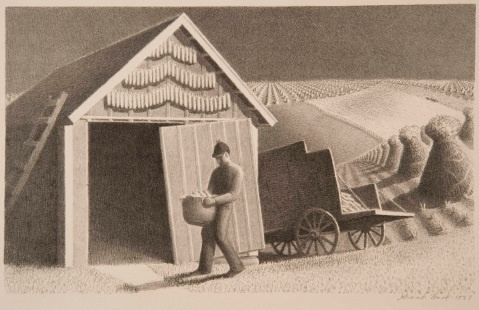Rural America
Unlike their contemporaries in metropolitan areas who were invested in the struggles of urban life and the utopian promise of the modern city, the Regionalists focused on rural hardship, farming, and scenes that emphasized the beauty of the pastoral landscape. During the 1930s, Regionalism gained wider traction as its key practitioners—Thomas Hart Benton (1981.13), John Steuart Curry, and Grant Wood (1982.77)—advanced uniquely American subject matter and traditions as a way to encourage large swaths of the population severely hurt by the Great Depression. Although all three artists had studied abroad in Europe, they maintained their commitment to creating a specifically American style of art that addressed social, economic, and political issues emerging from across the land. While the Regionalists worked in the Midwest, their prints were commissioned and distributed nationally by the publisher Associated American Artists. Available through department stores and mail order catalogues at relatively low prices, they provided middle-class families with a way to own fine art.

